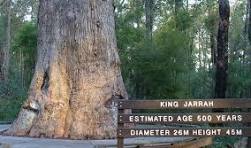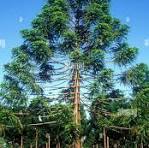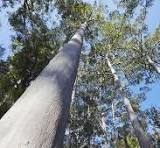Picture a land where trees aren’t just trees, but unique species, found nowhere else in the world. This is Australia, a country that’s home to an array of Eucalyptus or Gum trees, each with their own set of remarkable properties. One such tree is the Karri, a marvel that grows only in a small pocket of southwestern Australia. It’s one of the world’s finest in terms of structural properties, a testament to Australia’s diverse and unique natural ecosystems.
But that’s not all. Australia is also home to a variety of timbers, each as unique and beautiful as the trees they come from. Imagine the rich, warm tones of Jarrah also known as Swan River Mahogany, due to it’s similar appearance to Mahogany. This timber is ideal for fine furniture. But unfortunately it was used for railway sleepers bridge pylons and roofing timber. It was even exported to England and used as an alternative to cobble stones. And, now there is hardly anything left. It only grows in a small area of South Western Australia. Finally the Government put very strict regulations on felling Jarrah. As a carpenter this is one of my favourite timbers.

Tuart is another fine hardwood only found in Western Australia and only a few pockets are left the Sheoak is one of my favourites, so easy to work, straight and true. It resembles Oak and a little bit like Ash too. Boxwood is best for flooring. Stringy Bark is robust enough for fence posts, but due to its interlocking grain, it is not ideal for furniture. These aren’t just materials for furniture or flooring; they’re pieces of art, each with its own set of significant structural properties.
Native Pines
Let’s not forget about the native pine trees. Kauri, Huon, Bunya, Wollemi, and Celery Top pine, each with their own unique characteristics. Huon Pine, for instance, is the second slowest-growing tree in the world and is almost immune to insect and fungus attacks, making it ideal for boat building.

Kauri Pine, on the other hand, is a conifer species known for its moderate density, straight and consistent grain, making it highly workable and versatile for various woodworking projects. Its heartwood is resistant to insects and fungi, making it suitable for long-term, outdoor applications.
Karri is a hardwood timber native to Australia. Its durability and red hues make it suitable for a broad range of applications. It’s highly regarded for its strength, durability, and consistent colour, making it an excellent option for outdoor furniture, cladding, framing, and roofing. The big draw backs are; Termites love it. And, once dry impossible to drive a nail. In fact when it is cut with a power saw, sparks fly. This is due to its high silica content.

Bunya Pine is a slow-growing, ornamental and timber conifer native to Australia. Its distinctive foliage, attractive dark green colour, and bubbly bark make it visually appealing. Its wood is resistant to insects and fungi, making it suitable for boat building and other applications where long-term resistance to the elements is required.
Tasmanian
Huon Pine is a slow-growing, ornamental and timber conifer native to Tasmania, Australia. It’s known for its attractive, unusual dark green foliage, bubbly bark, and sprouts multiple trunks. Its wood is extremely durable and waterproof, imbued with a distinct oil content that renders it insect-proof and waterproof.
Rare Pine
Wollemi Pine is an ancient, endangered species of conifer native to Australia. Despite its endangered status, it’s easy to grow and requires relatively low maintenance. Its wood is hardy, durable, and resistant to a variety of environmental conditions, making it suitable for a range of applications, from construction to landscaping.
Celery Top Pine is a slow-growing ornamental and timber conifer native to the temperate rainforests of Tasmania, Australia. It’s known for its hard, strong, and dense wood, which is valued for its durability and workability. Its straight grain and even texture make it suitable for a variety of woodworking projects, from furniture to flooring.
Conclusion
These timbers are not just about their unique aesthetic and functional properties; they also hold cultural and environmental significance in Australia. They stand as a testament to the country’s diverse and unique natural ecosystems, and their preservation is crucial for maintaining biodiversity. So, next time you’re in Australia, take a moment to appreciate the unique beauty and diversity of these native trees. The handyman